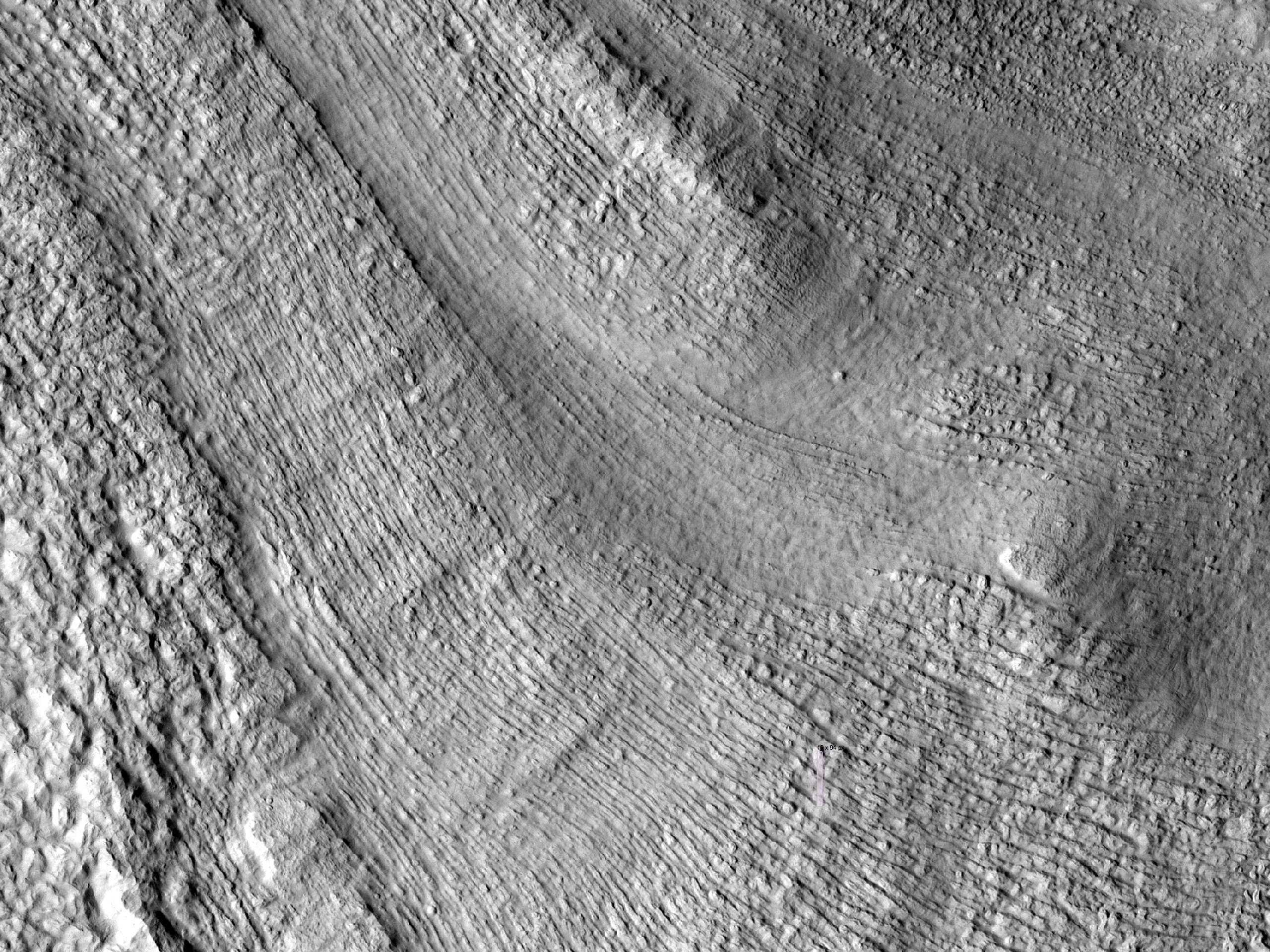The life of glacier-like forms (GLFs) on Mars can be quite a drag, especially when having to push through all the Martian dust and rocks for millions of years. In this image, we see a potential debris-covered glacier spilling out onto relatively flat plains in Protonilus Mensae,
spreading into a bulb-like lobe while bulldozing the surface in front of it.
After years of surface modification, different types of landforms develop. The most common glacial landforms on Mars are
viscous flow features and curved, raised ridges at the terminus of a GLF called “moraines.”
This close-up image of the GLF surface also shows linear features resembling fractures, as seen on many terrestrial glaciers. Also visible on the sides of the valley walls are a
series of parallel lines that could potentially be exposed layers or lines that mark the GLF’s past levels.
Ice is one of the many powerful agents that can modify the surface of a planet. On Mars, water-ice tends to be more common in the mid- to high latitude regions and can serve as paleoclimate indicators or windows into the past climate of Mars.
ID:
PSP_008809_2215date: 12 June 2008
altitude: 297 km
https://uahirise.org/hipod/PSP_008809_2215
NASA/JPL-Caltech/University of Arizona
#Mars #science #NASA
